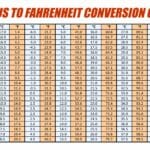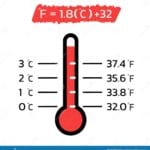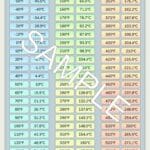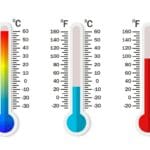This guide provides a clear, step-by-step process for converting 425°F to Celsius and applying that knowledge practically, especially in cooking. We’ll equip you with charts, calculators, and specific examples to make this information accessible and actionable.
Converting 425°F to Celsius
So, your recipe calls for 425°F, but your oven uses Celsius? No problem! Converting between Fahrenheit and Celsius is simple. 425°F is equivalent to 218.33°C, which is typically rounded down to 218°C for practical cooking. This temperature is a kitchen workhorse, perfect for achieving crispy crusts and beautifully roasted vegetables.
Step-by-Step Conversion
Here’s how to convert 425°F to Celsius using the standard formula:
- Subtract 32: 425 – 32 = 393
- Multiply by 5/9: 393 * (5/9) = 218.33
- Round (Usually): For cooking, 218.33°C is generally rounded to 218°C.
Quick Conversion Chart
Here’s a handy table for common oven temperatures:
| Fahrenheit (°F) | Celsius (°C) | Gas Mark (approx.) | Typical Use |
|---|---|---|---|
| 325 | 163 | 3 | Delicate baking (meringues, custards) |
| 350 | 177 | 4 | Cakes, cookies, slow roasting |
| 375 | 191 | 5 | Bread, roasting vegetables |
| 400 | 204 | 6 | Bread, roasting meats |
| 425 | 218 | 7 | Pizza, pastries, crisping, roasting vegetables |
| 450 | 232 | 8 | Searing, high-heat roasting |
| 475 | 246 | 9 | Broiling, very high heat |
Remember, gas mark equivalents are approximations and can vary between ovens.
Cooking at 218°C (425°F)
218°C (425°F) is a versatile temperature, ideal for various cooking techniques:
- Roasting Vegetables: Achieve perfectly caramelized and crispy roasted vegetables like broccoli, Brussels sprouts, potatoes, and carrots.
- Baking: Create golden-brown pastries, cookies, pies, and artisan bread. This temperature also works well for baking pizza, resulting in a crispy crust.
- Roasting Meats: Certain cuts of chicken, pork, and even some beef roasts benefit from this temperature.
Oven Tips and Tricks
- Oven Thermometer: Invest in a reliable oven thermometer to ensure accurate temperature readings. Your oven’s thermostat might not always be precise.
- Oven Calibration: Ovens can drift from their set temperatures over time. Consult your oven’s manual for calibration instructions or consider professional calibration.
- Food Rotation: Rotate your food halfway through cooking, especially larger items like roasts, for even cooking and to compensate for potential hot spots in your oven.
Fan-Forced Ovens: Adjustments & Considerations
Fan-forced (convection) ovens circulate hot air, cooking food more quickly and evenly. Reduce the temperature by about 20°C (approximately 36°F) when using a fan oven. So, for a recipe requiring 218°C (425°F), start with around 198°C in a fan-forced oven. Always consult the recipe or food packaging for specific instructions.
Fan Oven Conversion Table
| Fahrenheit (°F) | Celsius (°C) – Conventional | Celsius (°C) – Fan Oven (approx.) |
|---|---|---|
| 350 | 177 | 157 |
| 375 | 191 | 171 |
| 400 | 204 | 184 |
| 425 | 218 | 198 |
| 450 | 232 | 212 |
| 475 | 246 | 226 |
High Altitude Baking
At higher altitudes, the lower air pressure affects baking. When using 425°F (218°C) at high altitudes, you might need to adjust the recipe or baking time. Consider increasing baking time, slightly raising the temperature, or using less leavening agent. Consult high-altitude baking guides or adapt your recipe accordingly.
Troubleshooting
If you encounter issues, such as uneven browning or dryness, consider:
- Temperature Adjustments: Lower the temperature if food browns too quickly in a fan oven. Make slight adjustments based on your oven’s performance.
- Moisture Retention: Cover the dish with foil to trap moisture if food becomes too dry. Basting throughout cooking can also help.
- Baking Times: Adjust baking times as needed based on observable outcomes instead of strictly following recipe times.
- Oven Thermometer Check: Double check that your oven thermometer is accurately calibrated to rule out temperature discrepancies in the oven.
Ever wondered what 98 degrees Fahrenheit is in Celsius? Discover the equivalent temperature by checking out our guide on 98 degrees Fahrenheit to Celsius. Curious about your weight in a different metric system? Uncover the conversion for 218 pounds to kilos with our easy-to-understand explanation.
FAQ
- Why is accurate temperature conversion important? Accurate conversion ensures your dishes turn out as intended, especially when using recipes from different regions with varying temperature scales.
- My oven doesn’t have a Celsius setting. What can I do? Use the conversion formula or a reliable online converter to determine the Celsius equivalent and then an oven thermometer to monitor the temperature closely.
- Does oven type affect cooking temperature? Yes, different oven types (conventional, fan-forced, gas) distribute heat differently, potentially requiring temperature adjustments.
This comprehensive guide provides all the essential information you need to confidently convert 425°F to Celsius and achieve culinary success. Happy cooking!
- Unveiling the Enigma: Mansoureh Khojasteh Bagherzadeh’s Public Appearances & Private Life in Iran - July 18, 2025
- Unveiling the Mystery: Mansoureh Khojasteh Bagherzadeh’s Husband: A Rare Glimpse into a Private Life - July 18, 2025
- Unveiling Masoud Khamenei’s Mother: Power, Influence, and Iran’s Future - July 18, 2025
















